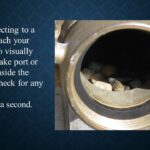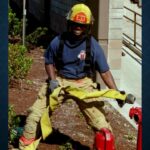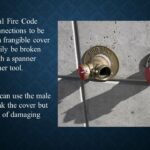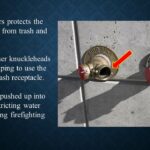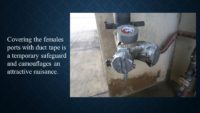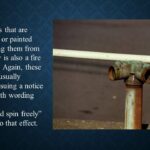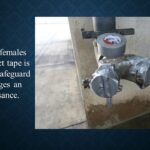
By Raul Angulo
I still get e-mails reminding me that a trick of the trade is not a drill. My answer is–it depends on how you present it. Simply performing a trick or demonstrating a shortcut technique is not as effective as tying it to teaching points or a procedure. You can turn any scenario into a drill. Consider this scenario: A firefighter has just finished washing and assembling his bunking gear when the bell hits. The firefighter quickly dons the pants and coat but doesn’t have time to put all his personal tools back into the pocket. The engine arrives on scene and the officer gives the order to charge the standpipe with two 2 ½-inch hoses. The firefighter goes to connect the fire hoses to the siamese, but the female swivels are rusted shut. The firefighter tries to break the swivels loose by hand but to no avail. He reaches into his pocket for the ol’ trusty, collapsible spanner wrench when he remembers he left it on the work bench just as the bell hit. Unless it is standard procedure to bring a spanner wrench from the engine whenever making a fire department connection (which isn’t a bad idea), the firefighter has to come up with a solution or run all the way back to the apparatus–which is already down the street. This adds additional stress to the firefighter because he feels personally responsible for delaying the evolution.
Standpipe and Sprinkler Connections
Charging the standpipe or supporting a sprinkler system are two extremely critical tasks on the fireground. Supporting the sprinkler system is important because as the fire engines start flowing water, it could lower the pressure in the water main, reducing the discharge flow to the sprinkler heads. A sprinkler system could be controlling a fire in an area that firefighters have yet to access with hoselines. The standpipe is the primary water source for attack crews in multi-story, mid-rise, and hig-hrise fires. A delay in these connections can affect the entire fire attack and allow the fire to grow.
There are a few problems that can occur when a firefighter has to connect fire hoses to a standpipe and sprinkler connection. First of all, the fire department connection (FDC) is a siamese, not a wye (a siamese is always two lines into one.) Some departments use one section of large-diameter hose (LDH) to make this connection, whereas others still use two 2 ½-inch hoses. There are benefits to both methods, but every FD connection I’ve seen around the country is still equipped with a 2 ½-inch siamese with female swivels.
The first problem that may be encountered is access. There may be a vehicle or large object blocking the FDC. Sometimes the FDC is at the base of the building foundation close to the sidewalk, making it very difficult to connect the hose because the clearance is limited. In this case, a 2 ½-inch hose is better suited than a section of LDH because the couplings are much smaller than LDH couplings. Older siamese connections sometimes have a curvature to them, and when they curve down towards the sidewalk, it is almost impossible to connect any hose to it. A quick, creative solution must be implemented. The best solution is attaching addition sections of 2 ½-inch hose, which can be stretched into the building stairwell and connected to the first-floor discharge port or nearest discharge port of the standpipe. This discharge port becomes the supply intake for the standpipe. Don’t forget it will require a 2 ½-inch double female coupling. You could even attach a 2 ½-inch siamese for a second supply into the standpipe.
The next problem that may be encountered is debris inside the siamese connection. The International Fire Code requires frangible (easy to break) covers over the female swivels. This prevents kids or any other knuckleheads out there from using the FDC as a trash receptacle. I have found rocks, cups, plastic bags, and other debris stuffed into the siamese. This debris can get pushed up into the system, blocking or restricting water flow, and it can also damage firefighting equipment if it makes it all the way up to the nozzle. Normally this fire code violation is handled by writing a notice of violation to the owner with instructions to clean out and cover the FDC, however compliance can take weeks with repeated re-inspections. If you come across an unsecured siamese FDC, make the effort to check it for debris and clean it out. Don’t wait for the owner to take action. This could become your problem at the next alarm. A temporary fix to camouflage this attractive nuisance is to cover the female ports with duct tape. Any time you come across an open siamese FDC, cover it with duct tape. This is sufficient to keep the FDC clear–at least till the end of your shift.
The last problem that is often encountered are frozen, rusted, or painted female swivels that don’t spin. Sometimes these can be freed if you have vice-grip strength in your hands, but if not, you’ll need a spanner wrench. Even when you break them loose, they’re often still tight, requiring deliberate effort to make the connection. Again, this is a fire code infraction that is typically resolved by writing a notice of violation to the building owner to have them free up and maintain the swivels so they spin freely, but the compliance can take a few days to a couple of weeks. At two o’clock in the morning, these locked swivels become your problem! Teach your drivers to carry a can of spray lubricant on the rig. Whether the crew is out inspecting or shopping for groceries, the driver should make it a point to check any FDC they come across. If the swivel is rusted or painted shut, take the time to free it and spray the female swivels with a lubricant like WD-40. Make this an expectation in the fire company. The last thing any firefighter needs on the fireground when time is of the essence, are surprises. This one is preventable.
The Drill
Back to the scenario we started with, if the driver or a firefighter comes across frozen or rusted female swivels on an FDC and the engine isn’t too far away, grab a 2 ½-inch double male and a 2 ½-inch double female coupling. Start with the double male and thread it into the female of the siamese. Then screw the double female on to the male coupling and you’re ready to go. After connecting and charging the hose, the same steps can be performed to the other female intake of the siamese for a second supply to the standpipe.
If you’re caught without a spanner wrench and the engine is down the block on the hydrant, rather than running all the way back to the apparatus to grab a spanner wrench and the couplings, preload or twist the hose counter-clockwise about four and a half turns. Line up the male threads of the hose to the frozen female intake. Apply deliberate pressure and untwist the hose in a clockwise direction into the female intake until it becomes snug. Take the kinks out and call for water. That’s it.
You don’t need a standpipe or a training tower to perform this drill. You can use the hydrant right outside your firehouse. Connect a siamese to the 2 ½-inch hose port of the hydrant and tell your crew, “We’re going to simulate this is a standpipe connection.” Instruct the firefighter to connect the hose to the hydrant. The officer holds pressure on the female swivel and tells the firefighter, “Ok, the swivel is rusted shut. You’re unable to break it with your hands, you left your pocket spanner wrench on the workbench, and the rig is down the block at the hydrant. What are you going to do?”
Drills You Won’t Find in the Books: The Dancing PPV Fan Drill
Drills You Won’t Find in the Books: Bridge Jumper Drill
Drills You Won’t Find in the Books: The Steel-Toe Boot Drill
Tiller Tape, Stripes, Markers, and Other Clever Uses for Tape
Your Ability to Call a Mayday Depends on How You Wear Your Radio
 RAUL A. ANGULO retired from the Seattle (WA) Fire Department with over 37 years of service and is Captain Emeritus of Ladder Co. 6. He is a featured author and a member of the Editorial Advisory Board for Fire Apparatus and Emergency Equipment magazine and a regular contributor to the Fire Engineering Web site. Captain Angulo will be teaching the 4-hour workshop Drills You’re Not Going to Find in the Books at the 2017 FDIC International.
RAUL A. ANGULO retired from the Seattle (WA) Fire Department with over 37 years of service and is Captain Emeritus of Ladder Co. 6. He is a featured author and a member of the Editorial Advisory Board for Fire Apparatus and Emergency Equipment magazine and a regular contributor to the Fire Engineering Web site. Captain Angulo will be teaching the 4-hour workshop Drills You’re Not Going to Find in the Books at the 2017 FDIC International.

